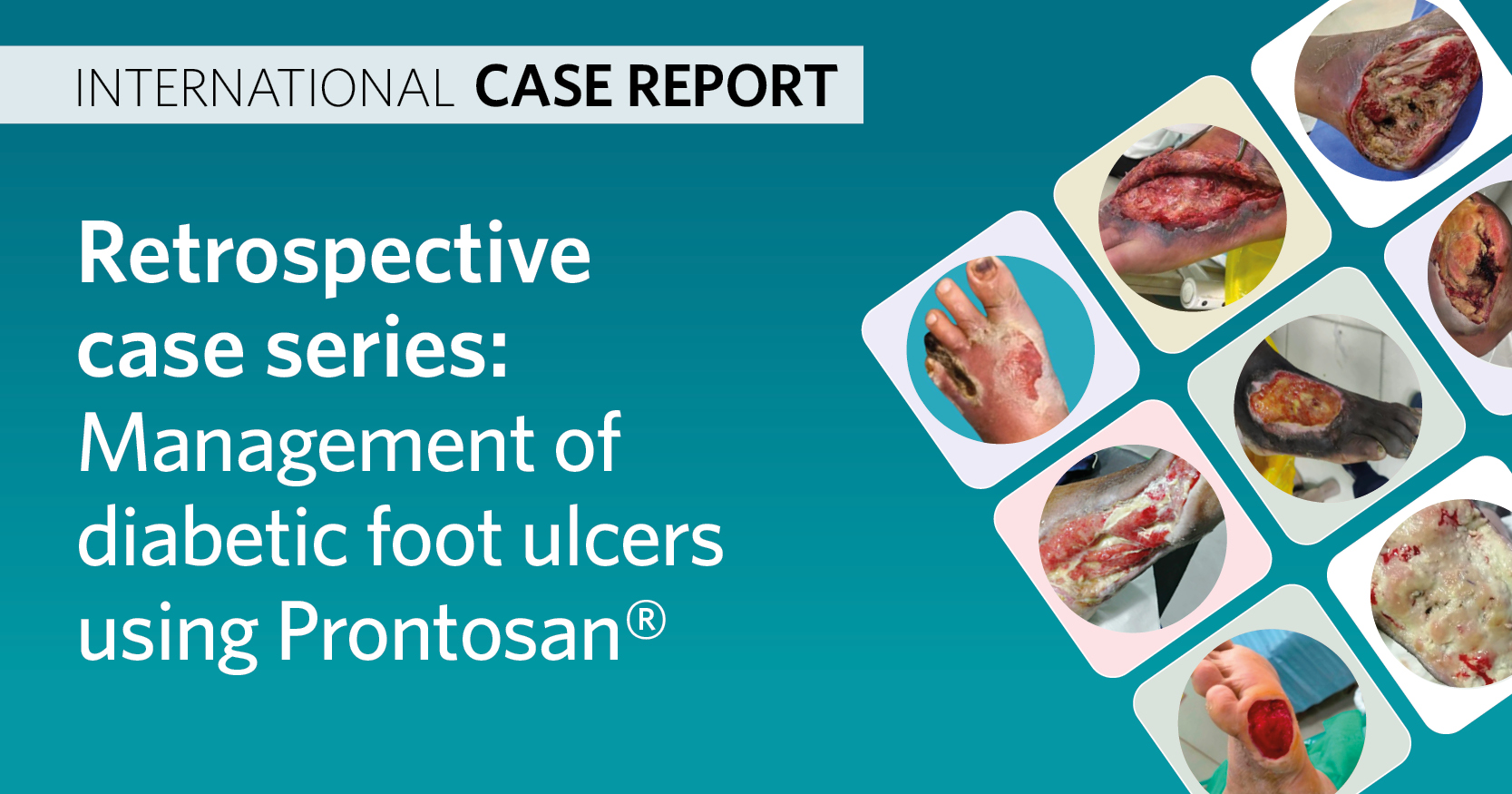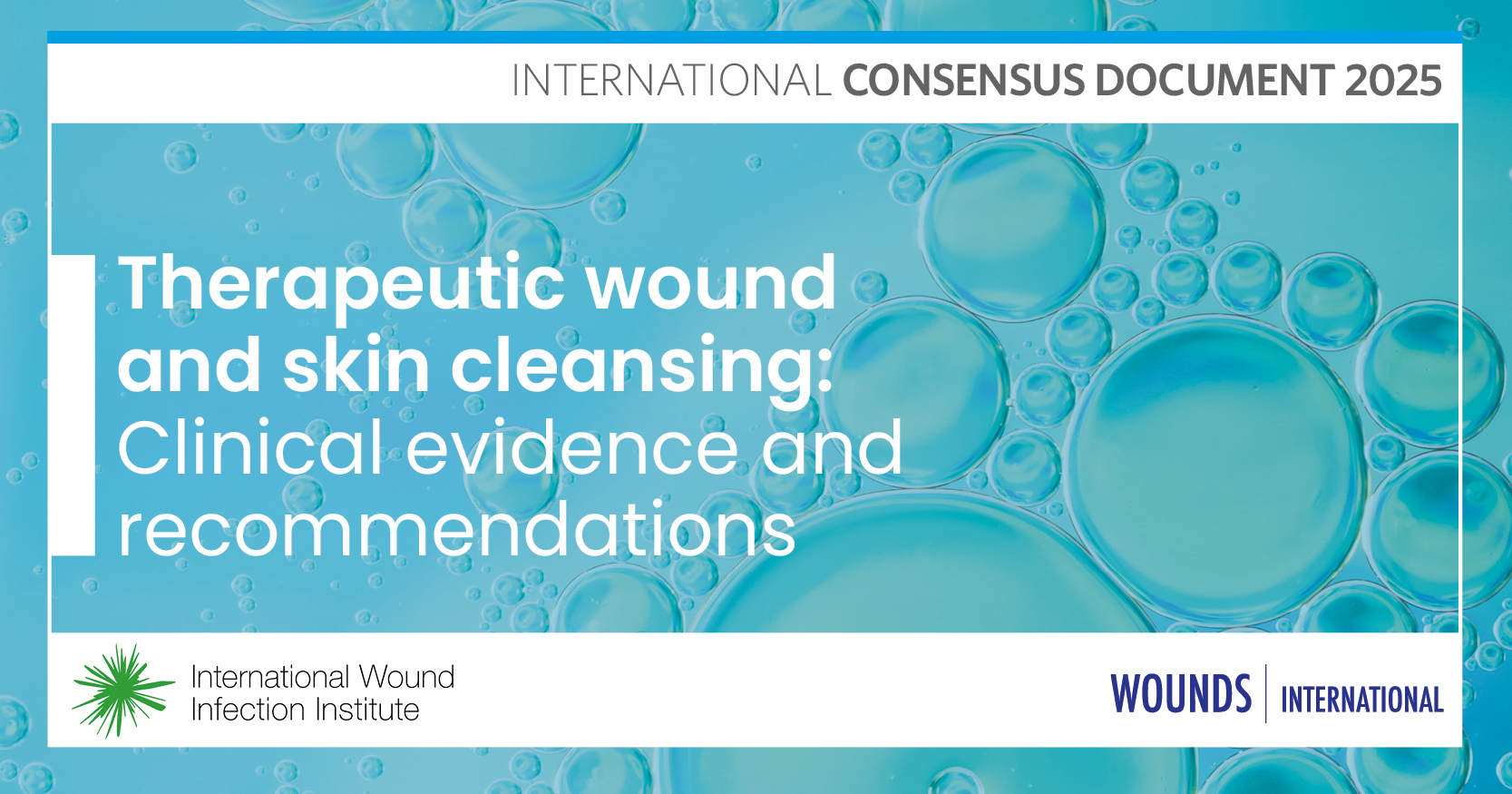The audience, consisting of nurses, tissue viability nurses, doctors, industry and others (including PhD students), were posed questions on their experience of wound bed preparation. From this, it was highlighted that the audience’s preferred wound cleansing agent in practice is a surfactant solution; they believe that mechanical debridement is an integral part of wound bed preparation.
Andreas Arndt introduced the topic of in vitro tests and their results, with the aim of providing insights about the information behind such results and how to interpret them. In vitro stands for “in glass” in Latin and can be defined as medical procedures, tests and experiments outside of a living organism and in a controlled environment, such as a test tube or petri dish. This means that the results cannot be transferred to clinical practice immediately.
Microbiological in vitro tests
Microbiological methods are classified as being qualitative (negative – no growth/positive – growth), semi-quantitative (minimum inhibition concentration or MIC) or quantitative (conclusion about the reduction of microorganisms within a defined concentration and time frame). The results may be different depending on the method (e.g. with and without interfering substances).
Reduction of microorganisms is a measure often presented as a percentage, with each “log” indicating a 90% reduction in the number of microorganisms. Log reduction may seem to be linear but is an exponential function. To illustrate, a 1-log reduction means the number of microorganisms is 10 times smaller, a 2-log reduction means the number of microorganisms is 100 times smaller, and a 5-log reduction means lowering the number of microorganisms by 100,000-fold. An example of log-reduction against S. aureus and P. aeruginosa achieved by Prontosan under dirty conditions and HOCI/NaCI 80ppm can be found in Table 1.
About the biocompatibility index (BI)
Andreas discussed the biocompatibility index (BI), derived from the therapeutic index, which describes the relationship between the therapeutic (effective) and potentially toxic doses of a medication. For example, BI in the Consensus on Wound Antisepsis: Update 2018 (Kramer et al, 2018) showed that if the quotient of bactericidal efficacy and tolerability against mouse fibroblasts in vitro, both tested under the same conditions is >1, the tolerance for the antiseptic of eukaryotic cells is better than that of bacteria (i.e. it is more beneficial to human cells to use an antimicrobial than allow bacteria to persist – the balance of tolerability and efficacy is more favourable, e.g. to PHMB).
To conclude, it was stressed that in vitro test results are useful for evaluating product performance; however, these results do not wholly reflect clinical practice. Clinical evidence can only be provided with clinical data, not with an “in vitro surrogate”.
Evidence-based decision-making
The second part of this symposium provided the audience with an opportunity to bridge the gap between scientific evidence and clinical practice. Kelly Phillips explained that evidence-based decision-making is required to make accurate formulary and clinical pathway decisions to enable evidence-based practice (EBP) to take place. Evidence-based decision-making and practice have been linked to (Wounds UK, 2023):
- Improved patient outcomes and quality of care
- Increased patient satisfaction
- Enhanced healthcare provider satisfaction
- Reduction in healthcare costs
- Increased efficiency and effectiveness in healthcare delivery
- Promotion of a culture of continuous learning and improvement in healthcare satisfaction.
When translating EBP into care, a formulary is a key place to start. A formulary is a list of medicines or treatments that are considered to have sufficient evidence for safety, efficacy and cost-effectiveness, and have been approved for use within a healthcare organisation (Wounds UK, 2023). All evidence should be critically appraised, meeting the underpinning important factors; there should be an understanding that not all in vitro testing/claims are scientifically accurate and an awareness of how formulary development is achieved.
The importance of recognising high-level, good quality evidence was stressed. Such evidence can be hard to interpret; however, there is a need to strive for the highest-level evidence for each product type. There needs to be a review of existing national and local guidance and policies (e.g. NICE), as well as the current published clinical evidence. It was explained that where there is good-quality evidence, such as NICE recommendations, as well as relevant and current evidence from randomised controlled trials (RCTs), it is easier to justify the inclusion of a particular product within a formulary. Over the years, wound cleansing has been recommended by national and international consensus as an integral part of wound bed preparation (IWII, 2022; Nair et al, 2023).
In addition, if there is robust evidence concerning cost-effectiveness and that a product can achieve better outcomes for patients, then it should be on formulary. If there is no evidence available to differentiate between products then user experience can be a useful alternative to propose a product to be included within the formulary. However, user experience alone is a subjective measure. Therefore, if a product combines high-level evidence (e.g. in vitro, RCT) with clinical expertise, it provides the necessary level of EBP required to form a strong basis for the decision-making for product selection within a formulary to be achieved.
Formularies aim to provide clinicians with comprehensive, evidence-based information on wound care products, as well as guide them in their choice of treatment, so that an optimum environment for wound healing can be achieved (Wounds UK, 2023). They also aim to promote EBP.
User experience to build local evidence
In 2016, the Skin Integrity Team (SIT) at Doncaster and Bassetlaw Teaching Hospitals NHS Foundation Trust (DBTH) was formed and the portfolio of the management of the Complex Wound Clinics (CWCs) began. A review of treatment delivered revealed a chaotic approach with inconsistencies and variability in the wound care provisions. Unwarranted variation was also recognised nationally by the work undertaken by Guest et al (2015) highlighting the burden of wound care. These themes continue to be a focus at national level as part of the National Wound Care Strategy Programme.
The SIT began the process of understanding and planning to improve practice, with the aim of addressing the chaotic and varied approach to wound care provisions. The main aim was to reduce the high wound infection rates within the CWCs at DBTH. When diagnosing and understanding the problem, it was established that there was no consistent approach to wound bed preparation (WBP); where WBP was undertaken, the main product choice was normal saline.
Kelly explained that after members of the SIT attended a symposium titled “Taking Wound Cleansing Seriously to Minimize Risk” at the Wounds UK annual conference in 2016, the team was able to address the issue by starting to review the potential of using an antimicrobial solution for wound cleansing. The symposium was presented by Mark Collier, who provided practical information and guidance based on his own experience of using Prontosan® (B. Braun) in practice, and Pamela Hofer, who outlined the scientific evidence for the product. To start putting improvements into action the SIT reviewed the current literature and evidence available around antimicrobial wound cleansing solution. The International Wound Infection Institute (IWII, 2016) suggested two options for targeting biofilms: polyhexamethylene biguanide (PHMB) and octenidine dihydrochloride (OCT). The two products were compared in terms of the effect on colony units, toxicity, detergent, skincare and deodorising agents and the available evidence. PHMB and betaine surfactant solutions were selected from this, as high-level good quality research shows it has better time efficiency than OCT, lower toxicity, reduced surface tension and no additional ingredient is required to protect the skin or deodorise.
Improvement process
To move forward, the team began to review the current literature and evidence surrounding this product. They identified 11 pieces of evidence, including 4 different types of research. Following this, the literature and evidence was critically appraised and analysed and systematically examined to judge its trustworthiness, value and relevance. See Box 1 for findings from the review process.
Although in vitro evidence is informative, slough, exudate and biofilm can be difficult to replicate in a lab. In infected wounds, biofilm is present in the slough and on the wound bed and there is a need to penetrate the deeper layers and to consider debridement. As such, WBP should be adapted dependent on wound condition; a WBP pathway may be useful, such as the B. Braun Wound Bed Preparation Pathway.
A clinical evaluation involving patients with a wound that had failed to reduce in size over a preceding 21 days and that had received repeated rounds of antimicrobial treatments was carried out in 2016 over a 6–13-week duration. This criteria was selected after reviewing information from Bellingeri et al (2016) and the IWII (2016) where it was highlighted that these factors contributed to the risk of a wound infection occurring.
The decision was made to replace normal saline with a PHMB and betaine solution soak (Prontosan Wound Irrigation Solution) at every dressing change. Patient and clinical outcomes were monitored and recorded; no other procedural changes were implemented during this phase. Outcomes showed that there was a clear reduction in wound size (reduction of 40% to 73%) over the testing period, demonstrating that PHMB and betaine cleansing solution could improve future clinical and patient outcomes. The product was selected as part of the wound care formulary and clinical pathways to guide the optimum environment for wound bed preparation and reduce the high wound infection rates.
Putting evidence-based decision-making into practice
In 2017, a wound cleansing policy pathway [Figure 1] was developed to support clinicians using the Prontosan Wound Irrigation Solution on wounds that are chronic, as well as wounds that are acute with a risk of infection or the presence of biofilm is probable. The pathway was implemented across hospital inpatient areas and the CWCs. As the team were able to demonstrate strong EBP and user experience, the pathway expanded across three other organisations, reaching district nurses, tissue viability nurses, practice nurses, inpatient hospital wards, the lymphoedema service and out of hours services in Doncaster.
The next challenge was for clinicians to embed evidence-based decision-making into everyday practice. To do so, education and support was provided in collaboration with B. Braun to those delivering healthcare across Doncaster, and a level of knowledge regarding wound cleansing, biofilm, wound infection and wound assessment was gained. A Plan, Do, Study, Act cycle was undertaken in 2019, which included a re-review of the latest recommendations for wound bed preparation. A clinical evaluation using mechanical debridement in combination with wound cleansing was undertaken. From this, the pathway was revised to include the Prontosan Debridement Pad alongside the solution [Figure 2].
Following this, the SIT updated the pathway to include mechanical debridement using the Prontosan Debridement Pad. Therefore, data collected from 2019 onwards included the use of Prontosan Wound Irrigation Solution being soaked on the wound for 10 minutes, followed by mechanical debridement using a Prontosan Debridement Pad +/- additional wound cleansing if required. The wound infection rate in 2019 demonstrated an 84.3% reduction over the 2-year period from 7.3% to 1.3% (28/261 patients to 1.3% 3/240 patients).
Kelly explained that an audit over a four-week period is carried out each year at DBTH to capture the effectiveness of the wound cleansing policy. Data from 2019 up to 2023 showed that infection rates had reduced by a total of 65.7%. The average percentage of patients with a wound infection in the CWCs between 2018 and 2023 based on the 2017 baseline data was 2.3%, thereby showing a reduction since the baseline data in 2017 of 68.4%. When all the data is taken into account from 2017 to 2023, the average trend of patients with a wound infection is 3%. Since 2019, the percentage of patients with a wound infection has remained below the 3% trend, therefore providing assurance that the evidence-based decision-making process implemented is well embedded and sustained in providing improved patient outcomes through the reduction of wound infections.
Evidence-based decision-making through critical appraisal of research evidence that is available in the field, combined with user experience and local evaluation, has helped to achieve evidence-based decision-making in practice. Through the introduction into the local formulary and the clinical pathway, and the provision of education and support, patient outcomes have improved through a reduction in wound infection.
Since the symposium that took place at the EWMA Conference, London in May 2024 the SIT have updated the pathway further, making it interactive with a pathway and a user guide. This can be accessed by scanning the QR codes on page 70.



